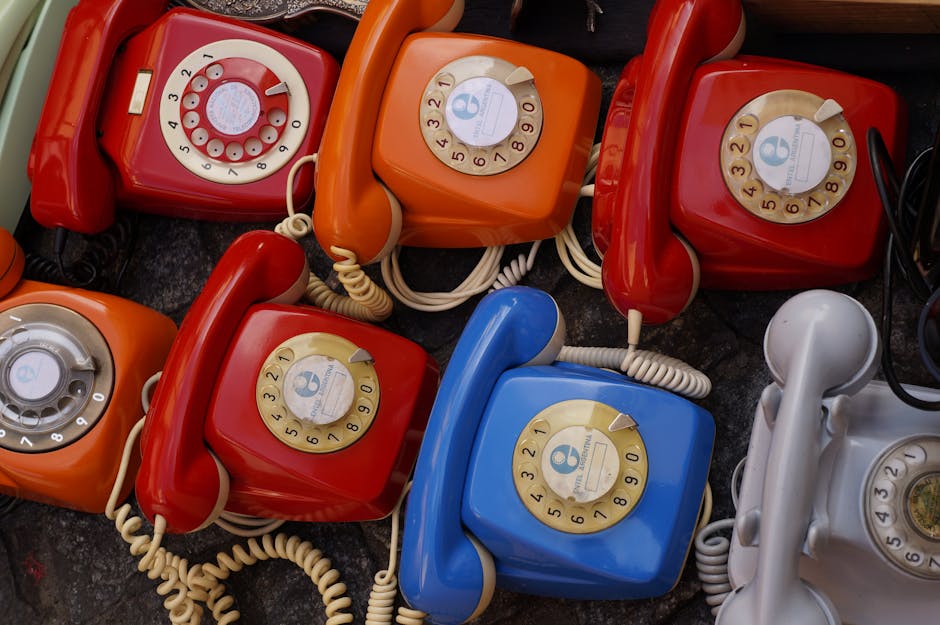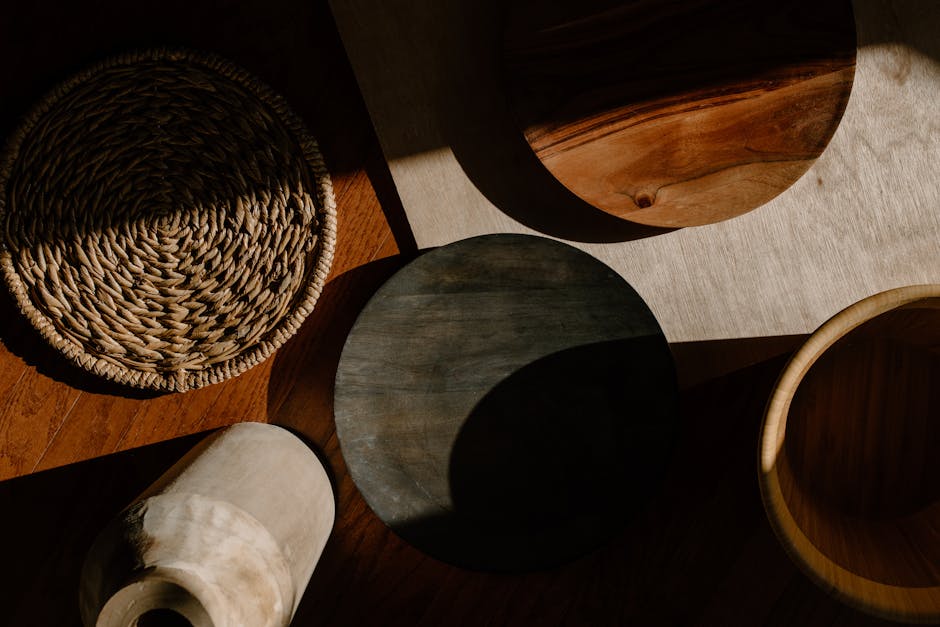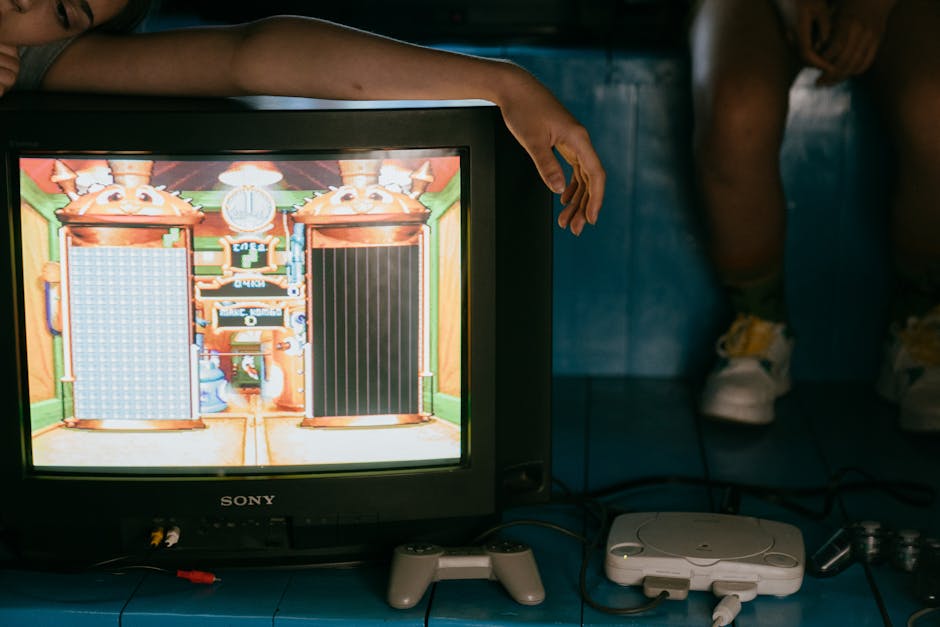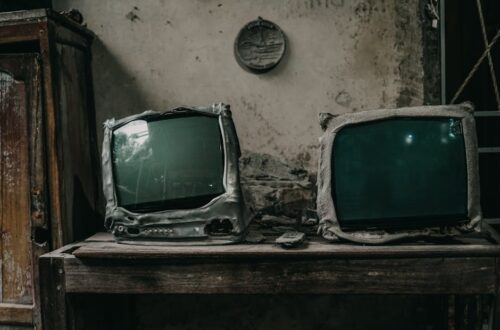Retro TV & Classics have a unique charm that continues to captivate audiences, decades after their original broadcasts. At Scene Flow – Scenlo, we celebrate the enduring legacy of these beloved shows, exploring why the golden age of television remains such a powerful force in pop culture. Whether you grew up in the era of analog dials and rabbit-ear antennas or discovered these gems through reruns and streaming, the magic of retro TV is undeniable.
The Golden Era: What Defines Retro TV & Classics?

Photo by Mike Norris on Pexels
The term “Retro TV & Classics” evokes a specific era in television history, typically spanning from the 1950s through the 1990s. This period saw the birth of iconic genres, from family sitcoms and action-packed adventures to supernatural mysteries and heartfelt dramas. Shows like Growing Pains, Knight Rider, and The Love Boat exemplified the diversity and creativity that defined the era. Each series brought something unique to the table—memorable theme songs, unforgettable characters, and storylines that resonated across generations.
What truly sets retro TV apart is its blend of simplicity and innovation. The limitations of technology forced writers and producers to focus on strong storytelling, relatable characters, and universal themes. These shows often tackled real-life issues—family dynamics, friendship, morality—while maintaining a sense of optimism and humor. Even the sets and costumes, often modest by today’s standards, added to the authenticity and charm.
For many, retro TV represents a golden age when watching television was a communal activity. Families gathered around the living room, eagerly awaiting the latest episode of their favorite show. The anticipation, the shared laughter, and even the commercial breaks became part of the experience. This collective nostalgia is a key reason why retro TV & classics continue to thrive in the digital age.
Nostalgia: The Power of Memory and Emotion

Photo by Bruno Cantuária on Pexels
Nostalgia is at the heart of the enduring appeal of retro TV & classics. Watching these shows transports viewers back to simpler times—childhood afternoons spent in front of the TV, or family evenings filled with laughter and shared stories. The emotional connection to these programs is powerful, often tied to formative experiences and cherished memories.
Shows like Full House, Diff’rent Strokes, and The Fresh Prince of Bel-Air are more than just entertainment; they are cultural touchstones that shaped generations. The characters became part of our extended families, their catchphrases and quirks woven into the fabric of our lives. Even the theme songs trigger an immediate wave of nostalgia, evoking a sense of comfort and familiarity.
This emotional resonance is not limited to those who watched the shows during their original run. Younger audiences, discovering retro TV through streaming platforms and syndication, are drawn to the authenticity and warmth that modern productions sometimes lack. The universal themes—love, friendship, overcoming adversity—remain relevant, bridging the gap between past and present.
In a world of rapid technological change and fleeting trends, retro TV & classics offer a sense of stability and continuity. They remind us of who we were, who we are, and the timeless values that connect us all.
Iconic Shows and Their Lasting Influence
![]()
Photo by Sinitta Leunen on Pexels
The legacy of retro TV & classics is built on a foundation of iconic shows that have left an indelible mark on popular culture. Series like Buffy the Vampire Slayer, The X-Files, and Twin Peaks not only entertained millions but also pushed the boundaries of storytelling and genre. These shows introduced complex narratives, serialized arcs, and morally ambiguous characters, paving the way for the modern era of television.
Other classics, such as Growing Pains and Silver Spoons, focused on family dynamics and coming-of-age themes. Their relatable stories and heartfelt moments resonated with audiences of all ages, creating a blueprint for future sitcoms and dramas. The influence of these shows can be seen in contemporary series that blend humor, emotion, and social commentary.
Retro TV also gave rise to unforgettable characters—heroes, antiheroes, and quirky sidekicks who became cultural icons. David Hasselhoff’s Michael Knight in Knight Rider, the lovable Papadopolis family in Webster, and the wise-cracking Will Smith in The Fresh Prince of Bel-Air are just a few examples. Their stories continue to inspire new generations of creators and fans alike.
The enduring popularity of these shows is evident in the countless reboots, spin-offs, and homages that populate today’s media landscape. Retro TV & classics are not relics of the past; they are living, evolving parts of our cultural heritage.
Storytelling Flow: What Made Retro TV Unique?

Photo by Paula Schmidt on Pexels
One of the defining features of retro TV & classics is the storytelling flow—a narrative rhythm that balanced episodic adventures with overarching themes. Unlike many modern series, which rely on complex, serialized plots, retro shows often delivered self-contained stories within each episode. This format allowed viewers to jump in at any point, making the shows accessible and easy to enjoy.
The pacing of retro TV was deliberate, giving characters room to breathe and stories time to unfold. Writers took care to develop relationships, explore moral dilemmas, and inject humor and heart into every episode. The result was a sense of continuity and cohesion, even as the shows experimented with different genres and tones.
Shows like The Love Boat and Major Dad exemplified this approach, blending comedy, drama, and romance in a way that felt organic and satisfying. The storytelling flow was enhanced by memorable guest stars, creative plot twists, and a willingness to tackle real-world issues with sensitivity and insight.
This emphasis on storytelling over spectacle is a key reason why retro TV & classics have stood the test of time. The stories may be simple, but their impact is profound—reminding us of the power of human connection and the enduring appeal of well-crafted narratives.
The Cultural Impact of Retro TV & Classics

Photo by Tara Winstead on Pexels
Retro TV & classics have had a profound impact on culture, shaping attitudes, trends, and even language. The influence of these shows extends far beyond the small screen, permeating music, fashion, and everyday conversation. Catchphrases like “What’chu talkin’ ’bout?” from Diff’rent Strokes or “How rude!” from Full House became part of the cultural lexicon, instantly recognizable to millions.
These shows also played a significant role in addressing social issues and promoting diversity. Series like A Different World and The Facts of Life tackled topics such as race, gender, and class with honesty and humor. By reflecting the realities of their time, retro TV & classics helped to foster understanding and empathy among viewers.
The impact of these shows is still felt today, as fans revisit old favorites and introduce them to new audiences. Conventions, fan clubs, and online communities keep the spirit of retro TV alive, celebrating the shows that shaped our collective identity. The continued popularity of merchandise, soundtracks, and themed events is a testament to the enduring legacy of these classics.
In many ways, retro TV & classics serve as a cultural time capsule, preserving the values, dreams, and aspirations of past generations. They remind us of where we’ve been—and inspire us to imagine where we might go next.
Rediscovering Retro TV: Why It Matters Today

Photo by Vlad Chețan on Pexels
In an age of endless content and on-demand streaming, the appeal of retro TV & classics is stronger than ever. These shows offer a welcome respite from the noise and complexity of modern media, providing comfort, familiarity, and a sense of belonging. Whether you’re revisiting old favorites or discovering them for the first time, retro TV has something to offer everyone.
For younger viewers, retro TV & classics provide a window into the past—a chance to experience the stories, styles, and sensibilities of earlier generations. For older fans, they are a source of nostalgia and joy, a reminder of cherished memories and simpler times. The communal nature of watching these shows, whether with family, friends, or online communities, fosters a sense of connection that transcends age and background.
As we continue to navigate a rapidly changing media landscape, the lessons of retro TV & classics are more relevant than ever. They remind us of the importance of strong storytelling, relatable characters, and universal themes. They show us that, no matter how much technology evolves, the magic of television lies in its ability to bring people together and tell stories that matter.
At Scene Flow – Scenlo, we believe that the golden age of television is not just a relic of the past—it’s a living, breathing part of our cultural heritage. By celebrating retro TV & classics, we honor the creativity, innovation, and spirit that continue to inspire and delight audiences around the world.
Sources
- https://www.imdb.com/list/ls064774223/
- https://www.myslicesoflife.com/2024/01/favorite-tv-shows-growing-up-in-80s-and.html
- https://www.pastemagazine.com/tv/list/80s-shows-ranked
- https://www.themoviejunkie.com/post/80s-and-90s-tv-shows-usa
- https://www.youtube.com/watch?v=zGOWM1W7mRo




